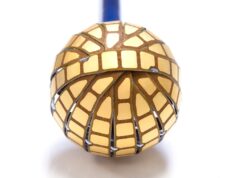On 6 November, an economic model that estimates the burden of calendar-based in-office follow-up for patients with cardiac implantable electrical devices (CIED) in Germany and the United Kingdom was presented at the International Society for Pharmacoeconomics and Outcomes Research (ISPOR) 14th Annual European Congress in Madrid, Spain.
Biotronik presented a series of four posters highlighting the healthcare burden of following-up pacemaker, implantable cardioverter-defibrillator (ICD) and cardiac resynchronisation therapy (CRT) patients in Germany and the UK.
“Increasing patient volumes will drive the demand for follow-up services, placing a potentially unmanageable burden on cardiology service providers,” said Carsten Stoepel, Lukas Hospital, Neuss, Germany. “New strategies are needed to handle the expected surge in workload associated with mandatory follow-up of these patients. Biotronik Home Monitoring is a highly effective method of follow-ups like the TRUST1-2 study proofed: Biotronik Home Monitoring delivers a reduction of 45% of in-office follow-ups. By the same time patient’s safety is enhanced by early detection of clinically relevant events.”
For the German model, approximately 677,800 prevalent CIED patients were estimated for 2010. Assuming two annual visits for pacemaker patients and four visits for ICD and CRT patients, the total number of routine follow-ups would increase from 1.66 million in 2010 to 2.23 million in 2015. These estimates do not include unscheduled follow-up visits. The annual societal costs of routine CIED follow-up services in Germany are expected to climb from 106 million Euros in 2010 to 142 million Euros in 2015. If 50% of all patients would attend one in-office follow-up visit annually and have their other follow-ups performed remotely, the annual savings for patients and hospitals in 2015 could reach 44 million Euros.
For the UK model, 225,000 prevalent CIED patients were estimated. Assuming two annual visits for pacemaker patients and four visits for ICD and CRT patients, the total number of routine follow-ups would increase from 538,000 in 2010 to 836,000 in 2015. These estimates do not include unscheduled follow-ups. For the UK, societal costs are forecast to rapidly increase from 28 million Euros in 2010 to 43 million Euros in 2015. If 50% of all patients would attend one in-office follow-up visit annually and have their other follow-ups performed remotely, the annual cost savings for patients and hospitals in 2015 could reach 13 million Euros.
“Hospitals, health insurance companies and politicians need to find solutions for handling the workload that result from follow-up visits for CIED patients,” commented Stoepel. “There are two possibilities: Pay to increase the capacities of the hospitals, or look for ways to work more efficiently such as remote patient management tools like Biotronik Home Monitoring.”
Considering that between 70 and 90% of all routinely scheduled in-office follow-ups visits do not need further action, and taking into account the expected increase in patient numbers, the need for potential efficiency gains provided by remote monitoring become obvious: “Biotronik Home Monitoring is a perfect example of a way practitioners can effectively increase efficiency,” explained Werner Braun, managing director, Biotronik.
“This technology, in fact, actually helps physicians track their patients’ status better than the traditional ways of handling follow-ups. The savings gained by using Biotronik Home Monitoring could help pay for the systems, and the time that is gained by using this automatic monitoring technology could help medical specialists redirect their time to those CIED patients who, based on their observed data, are in actual need of immediate attention versus those whose visits do not result in any actionable findings,” explained Stoepel. “The TRUST study showed that 90% of scheduled follow-ups were nonactionable and did not necessitate an in-person device clinic encounter. With Biotronik Home Monitoring you can significantly reduce the follow-up burden, and it provides you by the same time with early detection of clinically relevant events.”









